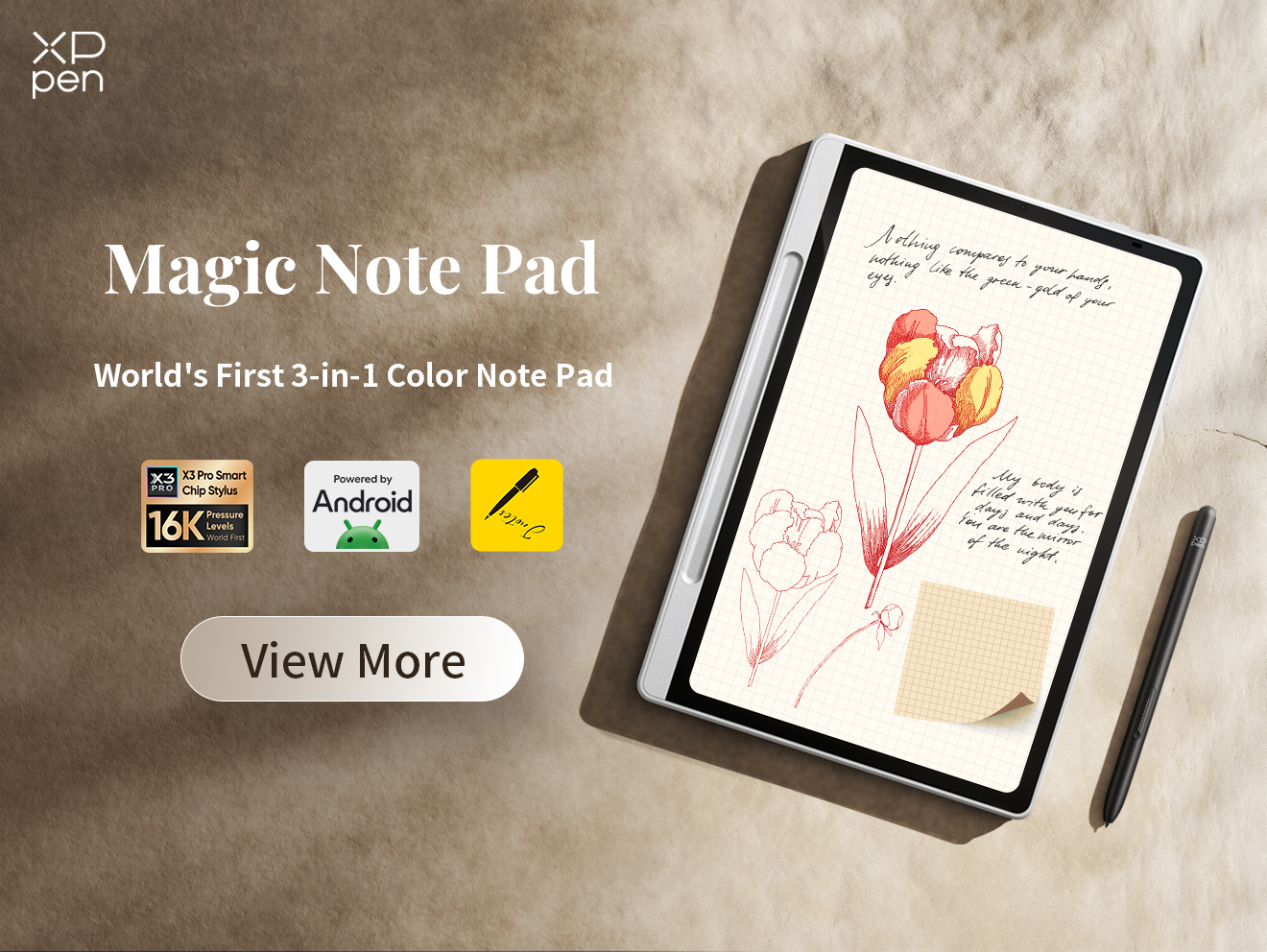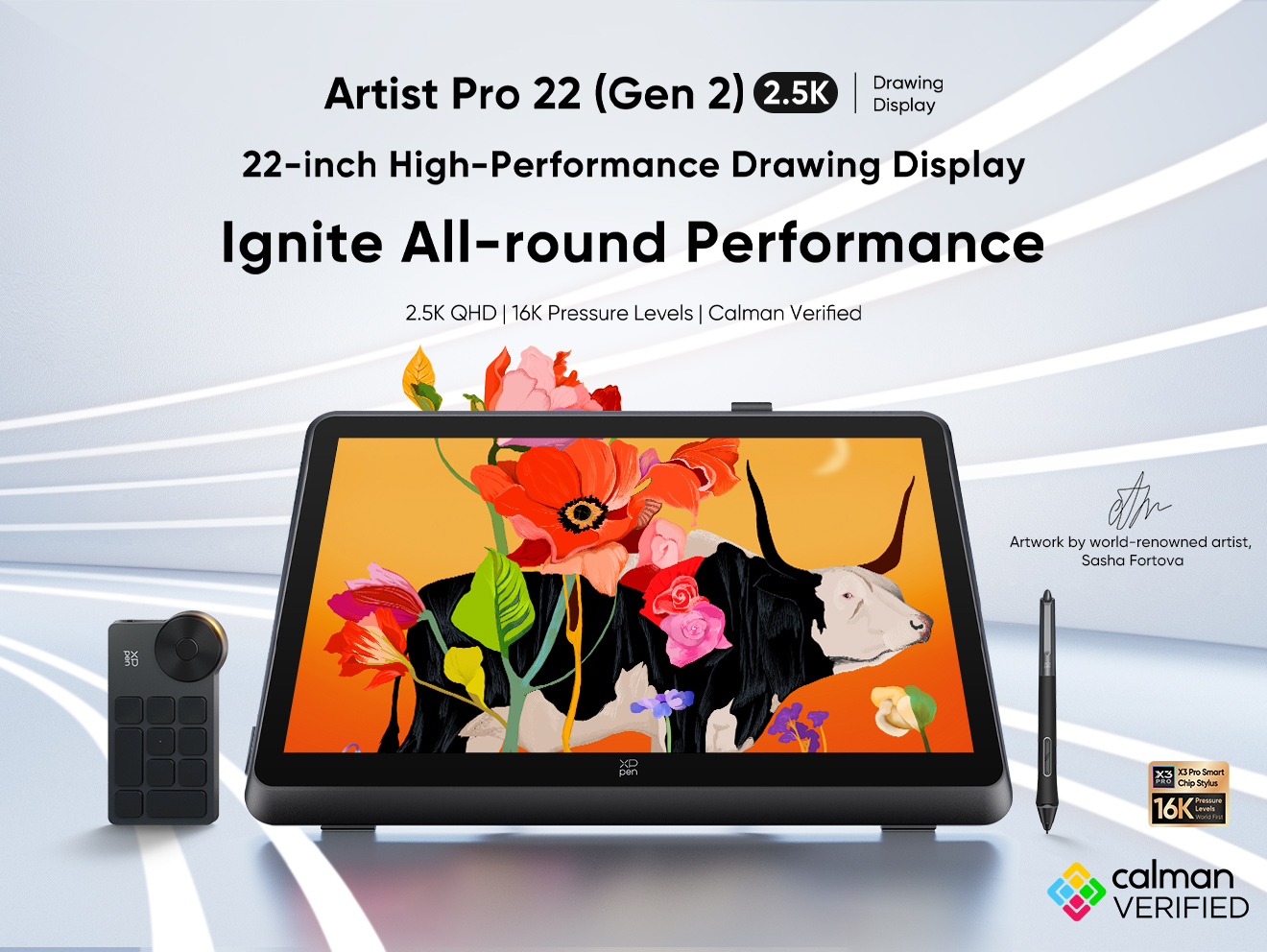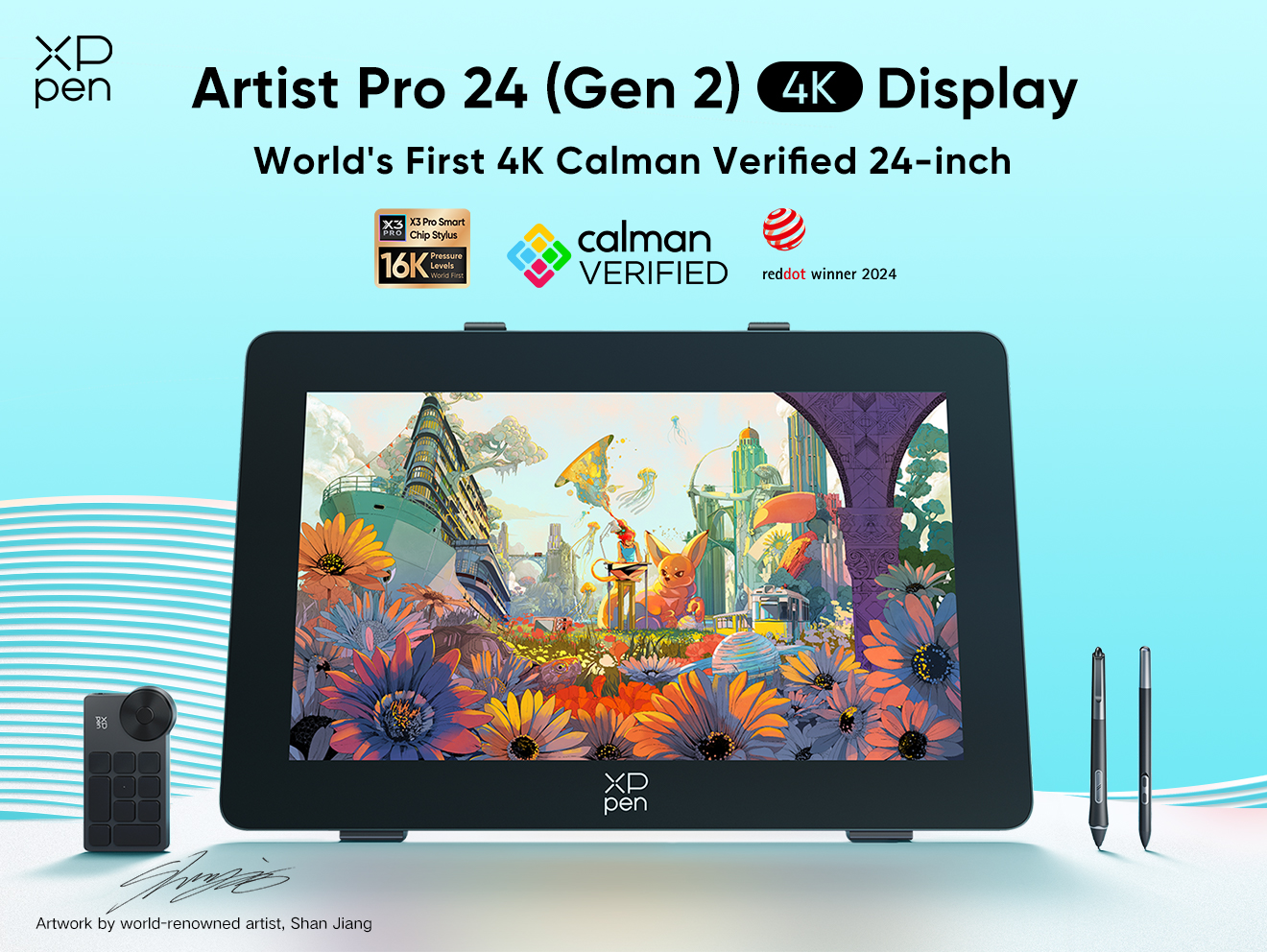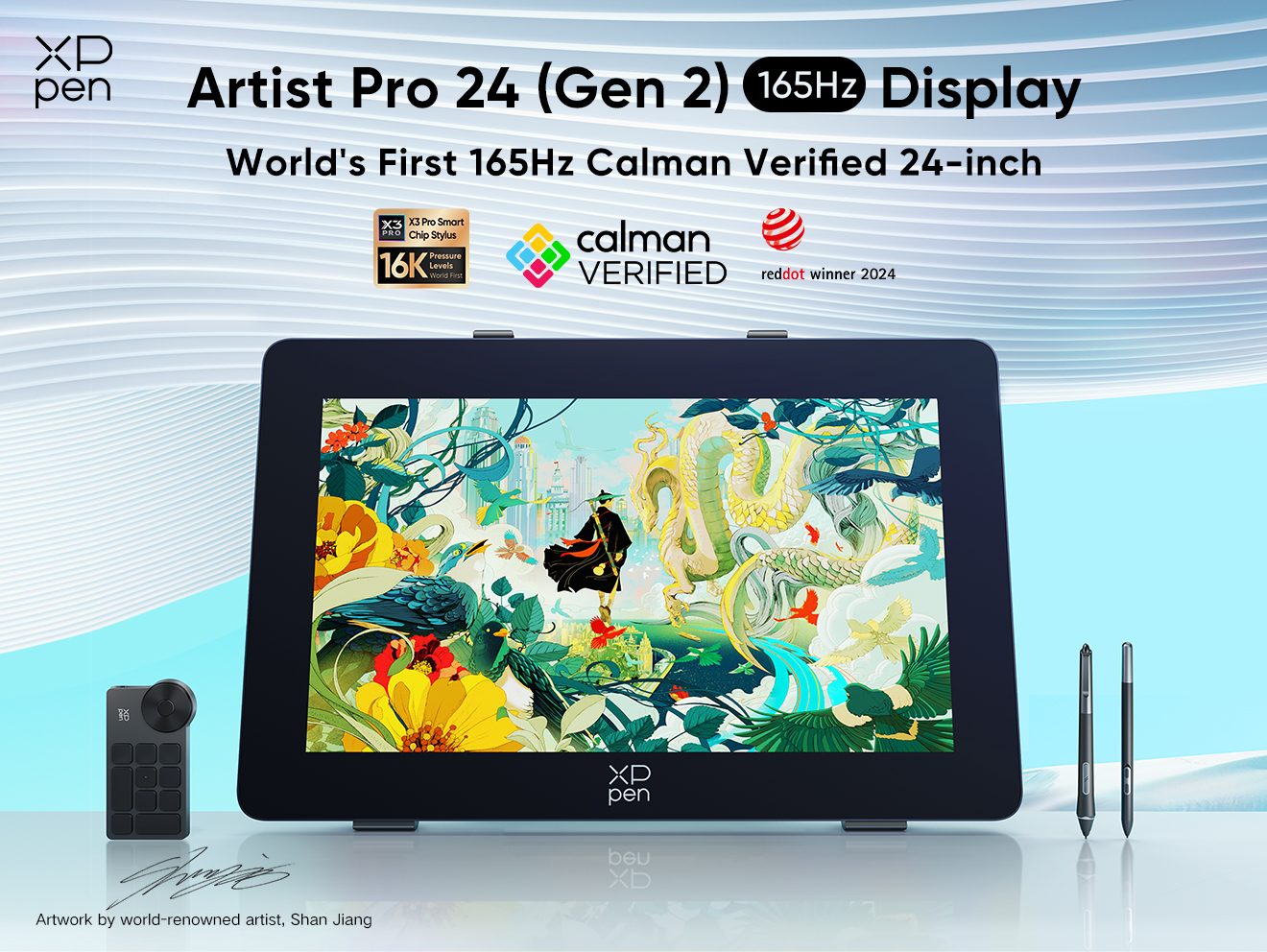
How to Choose the Best Laptop for Artists?
TIPSEven though smartphones are now capable of covering for many laptop utilities, laptops are still a necessity for artists.
As an artist, if you're in the market for a new laptop, you'd be forgiven for feeling a little bewildered by the amount of choices. There are, after all, a huge selection of models on the market, what with hardware makers pushing out dozens of new models every year.
The good news is that you don't need to look at every single laptop out there in detail, because you can quickly narrow your options down by asking a few questions about what you want in your next computer.
What will you primarily be using this laptop for? Is it used for drawing or graphic design work? Are you on the go often? Is it for casual use or professional use? Etc. There are a lot of such use cases which, when narrowed down, will greatly help when it comes to finalizing your purchase.
When it comes to choosing the best laptop for artists creative work, digital drawing or graphic design, 2D animation or 3D modeling, there are a few considerations.
Once you've decided on a use case, you can move on to the next aspect, which is the laptop's specifications. Laptops come with varying performance levels for different needs. Here's how you can pick the right one for you.
1. Which Operating System?

The operating system is the basic software that allows you to easily use your laptop and run programs and applications.
Choosing the right Operating System (OS) is the first and the most important step when buying a new laptop as it determines the environment you will work in. Therefore, verify that the pre-loaded OS meets your end-use needs.
1. Windows:
Windows OS is easy to use, with an intuitive graphical user interface (GUI). It is an ideal platform for work or study, and most devices are compatible with Windows.
2. MacOS:
All MacBooks come with Apple's latest desktop operating system, macOS 14 Sonoma. Simplified user interface. Ease of multitasking for robust users. Less vulnerable to security lapses.
3. Linux:
Open-source operating system. Secure to malicious programs. Supports wide range of programming languages for coders. Reliable and does not compromise performance.
Choose a user-friendly and simple to make use of setting for yourself. Both Windows OS and Mac Operating methods work greatest for an artist. However, Mac offers a much-updated display screen decision and therefore an extra vibrant setting.
Laptops outfitted with MacOS are slightly costlier than those with Windows OS. If you're excessive on the price range go for Mac OS, in any other case, Windows Operating System would additionally work wonderfully for you.
Digital artists and graphic designers can either use a Windows OS powered compared or a MacBook, as most of the software used by artists and designers are available on both platforms. By the way, if you're a XPPen tablet user, all three systems are fine because most of our tablets are compatible with these systems.What you need to know about hardware ?
As with any computer, hardware determines what a laptop can do. Better components
will naturally be more expensive, so it is important to consider the laptop's primary role and choose
hardware suitable for that purpose. A laptop purchased to browse the internet or write documents, for example,
doesn't need a high-end processor or video card.
2. Processors

As with any computer, the CPU is the brains of the notebook and does most of the general work. When the computer needs to access or change data, the CPU executes that task. Better CPUs will be able to process more data at quicker speeds.
Starting with the processor, for the casual laptop user, a current gen i3 processor is more than enough if all you need it for is casual browsing, viewing videos and running lite art software. If you want to play games also and work with more intensive art software, then an Intel Core i5 processor or above will be more suitable.
Core i7 and i9 processors are top-of-the-line and offer the best performance, but they come with a price tag to match. Go for these only if you know you have CPU intensive software or want the best gaming performance.
At least a dual-core processor if you want to be comfortable, probably 2Ghz dual-core. Anything more is because you need the processing power, especially for 3D rendering.
Nowadays most laptops come with quad-core. Not many applications utilize quad-cores, but they are good to get if the price difference isn't too much over the dual-core. That's because the OS can use assign the processors to OS functions, and some processors to the software, and when there's no sharing of processor, you get better response.
Not many applications use quad core processors effectively yet. If you are the artist who need to render 3D or videos regularly, definitely go for a quad core laptop.
The latest offerings from Intel are its Core i9 series in 14th-generation model. You can see the generation in the chip's part number, shown immediately after the dash. For instance, the i5-9400H is a 9th-generation CPU. Meanwhile, AMD's latest notebook chips are its third-generation mobile Ryzen 4000 Series CPUs, though they are a bit more difficult to find in laptop offerings.
When it comes to picking a laptop based on its CPU, newer is almost always better. Try to avoid buying a laptop with a CPU that's a few generations old. Unless you're doing something intensive like video editing, don't worry about buying a chip outside of the midrange. The four cores available in the Core i5-1135G7, for example, offer enough performance for almost anyone.
Find the explanation of processors name from Intel Official here.
If you are planning to use the laptop with software like Adobe Photoshop and Adobe after effects, then it should have a high-end CPU, as most of the photo editing tools depend on the CPU performance.
3. Graphics Card

Next, you look at the graphics card or GPU. A Graphics Processing Unit, or GPU, is a chip that generates all images you see on the screen. Most lower-end laptops ship with integrated graphics, which means the component is mounted inside the main processor. For instance, nearly all Intel laptop chips include integrated graphics. AMD produces Accelerated Processing Units, or APUs, that combine CPU and GPU cores on the same chip (die) in a similar fashion.
If you're a casual user, then you needn't consider this and can make do with an integrated GPU. However, if you plan on playing games or using rendering software, you will need a discrete graphics card.
Unless you're doing 3D modeling, you probably won't require a high end card. 2D digital drawing, vector work or layout don't really require that card to calculate 3D data. Generally speaking, the graphics card that already come with your computer should suffice.
If you use a particular 3D software, you should check out the graphics cards recommended by the software company. Each 3D software might have their own little quirks when running on non-recommended graphics card.
If you are an artist, then you can consider buying a laptop that offers at least 2GB of dedicated video memory. If you are not into gaming, then a regular integrated GPU should do the job. And if you want to play games at reasonable frames besides art, check the list of recommended graphics cards for the game.
Graphics card on laptops can't be upgraded after purchase so choose your laptops wisely. If you don't need to play games, you can save some money here.
4. RAM

RAM is used to store temporary data. When you draw something on screen, e.g. typing, that something is stored temporary in the RAM before you actually save your file. Photoshop layers you have yet to save, the many applications opened in the background but not in use, your many browser windows.
The amount of RAM determines how much art you can put on screen before you save. If you run out of RAM, your computer will slow down. It slows down because it has to switch to storing that temporary data on screen to the slower hard drive.
More RAM helps increase the number of undos you can save. Note that your OS uses RAM too.
Whichever laptop you decide on, a minimum of 8GB RAM is a must. This is ideal to be able to have multiple applications open at the same time comfortably, and have multiple tabs open on your browser without your laptop crashing on you. If you're into digital art, at the entry-level, 8GB of RAM is fine, but ideally, you'd want 16GB, especially with contemporary art applications.
RAM is affordable and this is not the area to save significant money.5. Storage

The amount of storage space on a laptop's internal drive(s) is how much data it can hold in total indefinitely. All data, from installed programs to digital artwork, reside on an internal storage device. These devices either rely on traditional platter-based hard drive technology or NAND Flash technology.
In contrast to RAM, data in storage does not necessarily need to be in use. An installed program that is currently not active takes up storage space but not memory. Many modern laptops now use solid-state drives (SSDs) which are faster and more reliable than traditional hard drives, but more expensive when comparing identical capacities.
An SSD uses NAND Flash to store data, which doesn't have moving parts. It offers a dramatic performance boost over a conventional hard drive – which does have moving parts — and can provide the most dramatic improvement in laptop usage when buying a new system.
This one is simple enough. You could go for a laptop with a high capacity HDD if you're someone who needs a lot of storage space. If you're looking for speed, then you want an SSD. Certain laptops come with support for M.2 or NVMe SSDs to speed up your read and write speeds.
Of course, there's always the middle ground of getting a low capacity SSD with a high capacity HDD. Some laptops offer both solid state drives (SSD) and the slower spinning hard disk drives (HDD) which gives you the best of both worlds - you can install the OS on the fast SSD and store your huge files on the spacious but slower HDD. A 1TB (1000GB) hard drive should be enough.
Most 13-inch laptops have only one slot for storage drives. When it gets to 15-inch, there are some that offer more than one slot for storage drives, which means you get to choose both SSD and HDD.
6. Screen size and resolution

For drawing, you need as big a screen as possible to see your full designs. The resolution and contrast are also important. That's so that the colors and details are as vibrant and crisp as possible.
Get an LCD monitor with a high resolution, with lots of pixels. The more pixels you have, the more things you can display on screen.
Screen size and resolution will affect your productivity. A resolution of 1920 by 1080 pixels should provide ample working space and still be able to show menus, control palettes.

Next consideration is screen size. A larger screen will enable you to see details clearer (if the resolution is high enough) and make it easier to click on the menus and control palettes. I suggest at least a 15-inch screen with 1920 by 1080 resolution.
Nowadays, there are screens that offer much higher resolution than 1080P. E.g. 4K screens at 3840 by 2160 resolution. There are plenty of 4K laptops in the market, but they are battery drainers and will usually always be plugged in.
If you want a high resolution screen, make sure that the software you're using supports it or the user interface, e.g. menus and buttons, are going to appear tiny and almost unusable. Do your research in respective software format. E.g. Adobe photoshop menus are buttons are tiny and incredibly frustrating to use.
Most laptops come with a refresh rate of 60Hz, but you will find gaming laptops with refresh rates of 144Hz and above. You don't need more than 144Hz.
7. Panel type

It's best to get an IPS panel monitor that will provide the widest viewing angle. In another words, you'll be able to see the same color no matter the angle of the screen.
They have better color reproduction, color accuracy and can display more colors. Do not get TN panels for graphic work.
It's also good to get a matte screen instead of one that's glossy. Glossy means you'll get reflections. I prefer matte. It's just a personal preference.
8. Color Gamut

If it's your thing, then go for it, but RGB otherwise does nothing to affect a laptop's performance.
If you're into print production or need color accuracy, need to compare design on your screen against a physical printout, then get a laptop that supports as close to 100% Adobe RGB as possible. The laptops have good IPS screens with decent colors and viewing angles, however they don't come close to 100% Adobe RGB.
If you do not need the level of color accuracy required for print production, you can just go for sRGB screens which still have more than satisfactory color reproduction. 100% sRGB screens cost less than 100% Adobe RGB screens.
It's worth noting that if you have a drawing tablet, you don't necessarily have to worry about your laptop's display quality, as the drawing tablet can serve as a high-quality screen which is professional for digital art.
9. Connectivity and Ports

Thinner laptops are known to compromise on ports, keep this in mind when making your decision. Try to figure out beforehand what ports you will need on your laptop. Some things you should consider are whether the laptop has USB 3.0 or 3.1 ports, and even if they have the required type you need, such as Type-A or Type-C. If you intend to connect your laptop to a larger display or TV, then you want to keep an eye out for HDMI or Display Ports, depending on your need.
Most laptops come with audio ports, but you might want to keep in mind whether you want a laptop with both a headphone and microphone jack or a uni-jack. For people who use cameras or other devices that use media cards, you can consider a laptop that has a media card slot for ease of access.
Like we mentioned above, thinner laptops usually compromise on ports, one which is commonly missing from such laptops is the Ethernet port. This might be a problem if you prefer a more stable, wired connection. Otherwise, consider laptops with 802.11ac Wi-Fi and up to 5GHz standards. If you're looking for Bluetooth support to connect audio devices or wireless peripherals, then look for notebooks with Bluetooth 5.0 support, you can bring it down to Bluetooth 4.2 if necessary.
10. Weight
While the general idea is that laptops are meant to be portable, this isn't always the case. You will find that some gaming laptops can be extremely bulky, with some coming with their own suitcases to be moved around in!
However, there are gaming laptops with smaller form factors as well that weight between the 2-5kg mark. Still pretty heavy. Of course, there are non-gaming high-performance laptops that weigh under 2kgs and can be carried around easily. Most casual use-case laptops are also usually lightweight.
If you like to travel often or work from anywhere, go for a lightweight, portable laptop. Think about whether you want a laptop that has a rotatable screen so that it can double up as a drawing tablet.
11. Battery Life

This is pretty important, especially if you're someone who is going to use a laptop away from a power outlet for long periods. This is a crucial factor to consider for those who travel a lot. Lower power laptops and ultrabooks which come without discrete GPUs are best in this category as they can easily offer you at least eight hours of battery life, plenty of time to find a power outlet.
With gaming laptops, you can throw battery life out the window. These beasts are usually meant to be plugged in at all times, and unplugged will give you up to two hours max.
12. Brands

1. Dell: Dell is a US technology company based in Round Rock, Texas. This company was founded by Michael Dell in 1984 and is now one of the largest tech companies in the world. Dell produces desktops, laptops and other hardware and is known for its build-to-order manufacturing and direct sales approach.
2. Lenovo: Lenovo is a Chinese technology company with headquarters in Beijing, China and Morrisville, North Carolina, USA. Growing since 1984, this company now boasts over 54,000 employees. Lenovo was one of one world's largest computer vendors based on unit sales.
Lenovo produces smartphones, TVs, tablets, and a range of laptops. Its ThinkPad and IdeaPad were a hit with consumers across the globe.
3. HP: HP, or Hewlett-Packard, is an American company, founded in Palo Alto, California, in 1939. It became one of the most world's leading PC manufacturer.
4. Asus: Asus is a Taiwan-based multinational computer and phone hardware and electronics company. The company is an original equipment manufacturer (OEM). It is currently the world's largest motherboard manufacturer, the world's third largest graphics card manufacturer, and one of the world's leading 3C solution providers.
Its products include desktop computers, laptops, netbooks, mobile phones, networking equipment, monitors, WIFI routers, projectors, motherboards, graphics cards, optical storage, multimedia products, peripherals, wearables, servers, workstations, and tablet PCs. Among them, graphics cards, motherboards and laptops have become ASUS' main competitive strength.
5. MSI: Established in 1986, MSI is a Taiwanese multinational information technology corporation headquartered in Taiwan. It designs, develops and provides computer hardware, related products and services .
MSI has a massive lineup of notebooks that cover a gamut of uses. Although the company is known for its gaming notebooks, MSI also has workstations and multimedia machines in its stable.
6. Acer: Established in 1976, Acer is an international private label company, mainly engaged in the research and development, design, marketing, sales and service of smartphones, tablets, personal computers, display products and servers.
In general, Acer is the fourth-largest computer manufacturer in the world and the fourth-largest manufacturer of Windows-based personal computer brands.
7. Apple: Apple's laptops are equipped with its proprietary macOS. Apple Inc is the world's biggest IT company and has been recognized for its innovative products.
Apple Laptops are known for their incredible light bodies and beautiful designs, coupled with the latest technology. The laptops are power-packed with features and offer unique features like a multi-touch keyboard and ambient light sensors built-in.
8. Huawei: Huawei is out to prove they are more than just a great mobile phone company. Huawei has a pretty well-established design language for its MateBook line of laptops and has been compared to Apple's Macbook, both in design and interface. All are powered by Windows OS.
Conclusion
If you're an artist, not just any laptop will do. You need a powerful laptop that can handle graphics programs. Most artists and designers choose to attract on a graphic drawing tablet ( such as XPPen ) by connecting it to the PC.
But it also needs to provide you with advanced editing capability. It's essential to create high-quality, detailed art.
Narrowing down all the options on the market can be overwhelming. That's why I've created this guide to help you find the best laptop for your needs.
Though a laptop computer by no means constructed for a particular performs, some options matter greater than the others whereas selecting for yourself the best laptop for drawing.
As you can probably see, there are lots of options. My preference for choosing a laptop would be to have at least SSD for storage, an IPS panel with at least 1080P resolution , its display should have good color calibration and at least 2 years of warranty.
About Us
Originated from 2005, XPPen is now one of the top brands under HANVON UGEE, integrated with digital drawing products, content and service as a globally notable digital brand of digital art innovation.
Learn more




